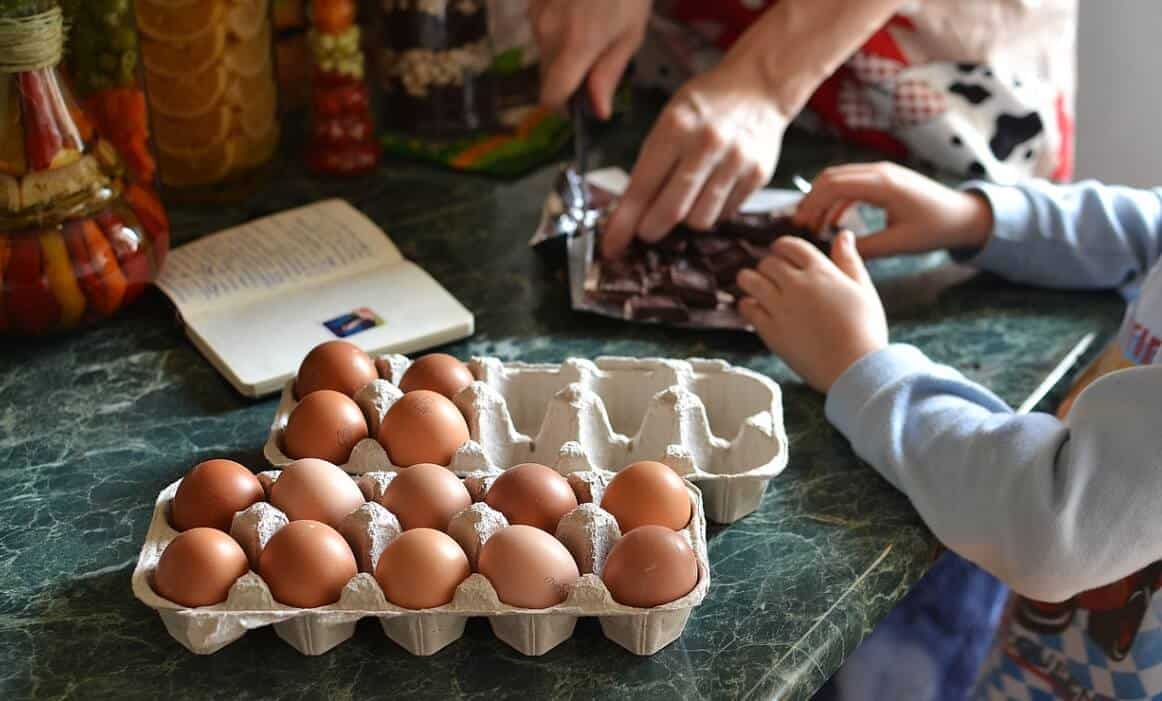“It’s not how much money you make, but how much money you keep, how hard it works for you, and how many generations you keep it for.” Robert Kiyosaki
I dare say there isn’t a soul on this planet as frugal as a mom on a budget. There are so many clever ways moms used to save money that our tips and tricks today pale in comparison to what they could achieve, considering how little they had to go on.
Imagine keeping the family afloat during periods of strife, such as WWII. Could you manage it? I know I would struggle some, and I know everything I know about saving and stretching that last dollar from my mom.
Thankfully, we don’t have to reinvent the wheel. All we have to do is follow in their great footsteps and hope we come close to their awesomeness. With that in mind, here are some clever ways moms used to save money that we can use today.
1. Meal Planning
With grocery prices being what they are today, having a meal plan is probably one of the smartest things you could do next to avoiding an impulse purchase while in the checkout lane.
Our mommas had it, our grandmas had it, and, heck, their grandmas before them probably had it too.
Meal planning is one of the most efficient ways to keep track of all the supplies in your kitchen, as far as groceries are concerned.
If you do a weekly meal plan, you will know exactly what ingredients need to be bought during your next grocery shopping trip, including the ones you have and those you don’t.
Unfortunately, many of us head out to the grocery stores armed with nothing but our credit card and a rough idea of what we need.
Bad spending habits when grocery shopping often opens up the door to lots of impulse purchase buying—things that you may end up not needing or using until they go bad.
With a meal plan, you will only get what you need. This can ultimately lead to substantial savings that can go toward your financial goal and keep you from being wasteful.
Don’t know where to start? Here are a few family meal plan templates you can check out.
2. Bond Over Free Activities
Did you know that the average American spends about $487 a year on leisure activities? From expensive concerts to movies and Disney World, leisure activities, although necessary, can be rather expensive.
That is, unless you choose to do it like our moms did. Yes, they still spent the occasional night out dancing, but for the most part, the leisure activities involved technically free things.
This is especially true when it comes to bonding with the family. Tell me, do you remember going to the park a lot? Camping maybe? Riding your bikes around the block and such?
Yes, these are the kinds of activities I’m talking about. Wholesome family activities that don’t cost any extra cash, if anything at all. Many of these activities are still available today, and you can take advantage of them with your family.
Go build a treehouse in the backyard or teach your kids how to bake. Hiking, camping, picnicking—these are all things I do with my kids on a regular basis. It helps us stay fit, bond more, and save me a ton of money.
3. Make Cleaning Products at Home
Did you know that you could make cleaning products right at home? No, I’m not talking about starting your own Mr. Clean company, although that would be great.
I’m talking about repurposing what you already have lying around the house to save money on buying specialist cleaning products like Mr. Clean.
Simple, everyday household items like vinegar, dishwashing detergent, and baking soda make excellent cleaning products. There are a million hacks on how to clean various surfaces in your home using them; all you have to do is research.
For example, you can clean your marble surfaces using dishwashing soap and some warm water. You can also use shaving cream to remove those hard water stains that make the chrome fixtures in your bathroom look dirty.
The trick is to make sure you have read the labels properly (some cleaning products don’t play well with each other) and do your research on which products can be used on which surfaces. This should save you a bundle on the cleaning products budget.
4. Go for Generic Medication
Now, I know this is a touchy subject. No mom wants to play around with their children’s health.
However, the truth is that generic prescriptions, much like store brands and generic products nowadays, go through the same rigorous standardization processes as brand name options. The only difference is that big brands make you pay for the name and a host of other overheads, such as marketing.
If you have to get some over-the-counter medication, it’s okay to try out the generic versions. What I do is ask the pharmacist how well the generic option compares to the brand options.
If you’ve been buying from them as long as I have, the pharmacist will be more than happy to help you save some money by telling the truth.
And the truth is often that the generic version and the brand option work the same way. One just costs a little less than the other.
5. Minimize Money Spent on Disposables
Today, we spend a lot of money on disposable products such as paper towels, plastic water bottles, plastic wrap, and the like. These are often single-use products, and they are used every day.
One way to save money on this is to simply make a list of all the single-use products you have at home and see if you can’t swap them for a longer-lasting option.
- Plastic bottles can be swapped for reusable water containers
- Paper towels can be swapped for washable cotton kitchen towels
- Plastic wraps can be swapped for reusable storage containers
The longer your list of single-use products, the more opportunities you have to save money by swapping those out with other options.
6. Organize “Swap Days”
In the time of our great-grandmas, there was something known as the barter trade. This is where they exchanged goods, not for money but for other goods or services. We still have versions of this today.
For example, Sarah from down the street babysits my daughter’s kids on some evenings so my husband and I can have a date night, with the understanding that I will do the same for her and her husband at some point in the future.
“Swap Days” are a lot like that, but with a host of variations. Here’s how it works for me.
Several moms and I from my community do this once every two months or so. We get together at one of our houses and exchange stuff.
It can be anything from kids’ toys to storybooks, recipes, school supplies, kids’ clothes, DIY craft supplies—you name it.
We find that this gives our kids (and ourselves) a chance to experience new stuff without necessarily having to buy the stuff at a regular store or thrift store.
Do you get what I mean? It’s like having a yard sale or visiting a thrift store but in the form of a barter trade where no extra cash is exchanged.
7. Minimize Food Waste
I’m going to tell you something that will break your heart:
- In the US, people waste about 80 million tons of food each year
- We throw away more than $444 billion worth of food every year
Meanwhile, 10% of the world’s population goes to bed hungry or starving. That’s over 800 million people going without food.

Minimizing food waste also helps you save money. From the list we made earlier when doing the meal prep, you probably realized that there’s a lot of food going bad in your fridge because you bought it and haven’t used it in any meal.
I do an audit every week. If I find food wasting away, I reduce how much of it I buy the following week. As for fruits, I make a smoothie and force-feed it to everyone in the family before it goes bad.
Lol! It’s okay; fruit is good for them! This way, I minimize waste and save money. Plus, I developed a super-lean grocery budget over the years.
There are many other clever ways moms use to save money. For example, if you are lucky enough to live in an area where you can have a kitchen garden, why not go for it?
It’s a wonderful way to grow your own produce and save money on groceries. Plus, it gives you a healthy hobby that you can share with the kids.
I should mention that saving money isn’t all about self-denial. You can still treat yourself to nice things in a fiscally responsible manner. My family and I go out for a family dinner once a month.
It’s an indulgence that we allow ourselves. We enjoy it, and it allows us to bond. These are things you can budget for and easily pay for, especially when you are saving money on many other avenues.
